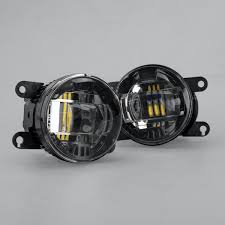Fog light retrofits and conversions involve upgrading or changing a vehicle’s existing fog light system to newer, more advanced, or different types of lights. Common upgrades include replacing halogen bulbs with LED or HID units, installing projector-style fog lights, or adding fog lights to vehicles that originally didn’t have them. While these modifications can improve visibility and vehicle aesthetics, they require careful planning and expertise. Mechanics play a critical role in ensuring these upgrades are performed safely and comply with legal standards, avoiding electrical or compatibility issues.
Professional Assessment and Planning
Before starting a fog light retrofit or conversion, experienced mechanics assess the vehicle’s current lighting system, electrical capacity, and mounting options. This evaluation helps determine whether the vehicle’s wiring, switches, and control modules can support the new fog lights. Improper planning can lead to electrical overloads, blown fuses, or malfunctioning lights. Professionals also consider the beam pattern and brightness regulations to ensure the retrofit does not create glare for other drivers or violate local laws. This stage often involves sourcing OEM-compliant parts or high-quality aftermarket components suitable for the vehicle.
Expert Installation Techniques
Installing upgraded fog lights involves more than just swapping bulbs or fixtures. Mechanics carefully integrate new fog lights into the vehicle’s existing electrical system, sometimes running new wiring or installing relays and resistors to handle different power requirements. This is done properly by the European Auto Repair in Olympia, WA based services. They also secure the lights in proper mounting positions to ensure correct alignment and durability. For vehicles with advanced lighting controls, technicians may need to reprogram or recalibrate control modules to recognize and properly operate the new fog lights. This meticulous approach minimizes the risk of electrical faults and ensures the retrofit performs reliably.
Testing and Calibration for Safety and Performance
After installation, mechanics conduct thorough testing to verify the functionality of the upgraded fog lights. This includes checking for consistent power supply, proper beam angle, and integration with other lighting systems. Calibration tools help adjust fog light positioning to maximize road illumination without causing glare to oncoming traffic. Many modern vehicles require diagnostic scans to clear error codes or update the vehicle’s computer system after retrofits. Professional testing ensures the fog light conversion meets safety standards and provides the driver with improved visibility during foggy or low-light conditions.
Benefits of Professional Fog Light Retrofits
Choosing professional mechanics for fog light retrofits guarantees a safe, effective, and legal upgrade. DIY installations risk damaging the vehicle’s electrical system, resulting in costly repairs or unsafe lighting conditions. Professional service providers have the knowledge, experience, and tools to handle complex wiring, component compatibility, and regulatory compliance. Their expertise also ensures warranty protection and preserves the vehicle’s resale value. Ultimately, professional retrofits enhance driving safety and aesthetics while preventing the pitfalls commonly associated with improper fog light conversions.
Conclusion
Upgrading or converting fog lights can significantly enhance vehicle visibility and style, but only when done correctly. Mechanics bring the essential skills and equipment to handle these modifications safely and efficiently. By entrusting fog light retrofits to professionals, drivers ensure a reliable, well-integrated lighting system that performs optimally in challenging driving conditions.

